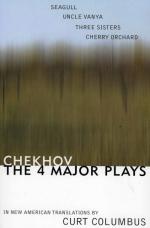|
This section contains 512 words (approx. 2 pages at 400 words per page) |

|
The Seagull Summary & Study Guide Description
The Seagull Summary & Study Guide includes comprehensive information and analysis to help you understand the book. This study guide contains the following sections:
This detailed literature summary also contains Bibliography and a Free Quiz on The Seagull by Anton Chekhov.
Anton Chekhov's Chayka or The Seagull (variously translated in English as The Sea Gull and The Sea-Gull) is the first play in the author's second period of writing for the theater—that of the last few years of his life—in which he penned his widely acknowledged dramatic masterpieces. With it, after a hiatus of seven years, Chekhov again returned to writing plays, and he revealed his mastery of techniques that he would exploit in his other great plays of that final period: Uncle Vanya, Three Sisters, and The Cherry Orchard. In all of them, Chekhov employs a method of "indirect action," one in which characters confront changes that result from offstage occurrences, often in a period of the characters' lives that elapses between acts. The plays also share the unique Chekhovian mood, a pervasive melancholic tone that arises from the haplessness of the characters that seem destined either to wallow in self-pity or indifference or consume themselves in frustrated passion. It is in these plays, with his special brand of "slice of life" realism, that Chekhov journeys to the outer limits of comedy, to a point in which its distinctness from quasi-tragic drame is blurred and at some points all but lost.
In The Seagull, a work that the author himself claimed contained "five tons of love," is a play about a very human tendency to reject love that is freely given and seek it where it is withheld. Many of its characters are caught in a destructive, triangular relationship that evokes both pathos and humor. What the characters cannot successfully parry is the destructive force of time, the passage of which robs some, like Madame Arkadina, of beauty, and others, like her son Konstantine, of hope.
When the play was first staged, in St. Petersburg in 1896, it was very badly received. The audience was unwilling to applaud or even abide a work that in technique and style countered the traditional kind of play built on comfortable conventions. Audiences were simply not ready to accept a work that seemed to violate almost all dramatic conventions, a play that, for example, had no clear protagonist or an easily identified moral conflict or characters who rigorously kept to points relevant to that conflict in their dialogue. For Chekhov, the response was devastating. There seemed to be no audience prepared to welcome the "new forms" championed by one of the play's characters, the young writer Konstantine Treplyov.
Had Chekhov's friend, Nemirovich-Danchenko, not taken an interest in the work despite its initial stage failure, the dramatist might well have given up writing for the theater. Nemirovich-Danchenko and his more famous codirector of the famous Moscow Art Theatre, Konstantin Stanislavsky, brought The Seagull to the stage again in 1898 and turned it into a remarkable success, the first Chekhov play that they produced in what soon became one of the most fortuitous associations in the history of modern drama. It was their staging of The Seagull and the other later plays of Chekhov that brought the writer his lasting acclaim as a dramatist.
Read more from the Study Guide
|
This section contains 512 words (approx. 2 pages at 400 words per page) |

|



